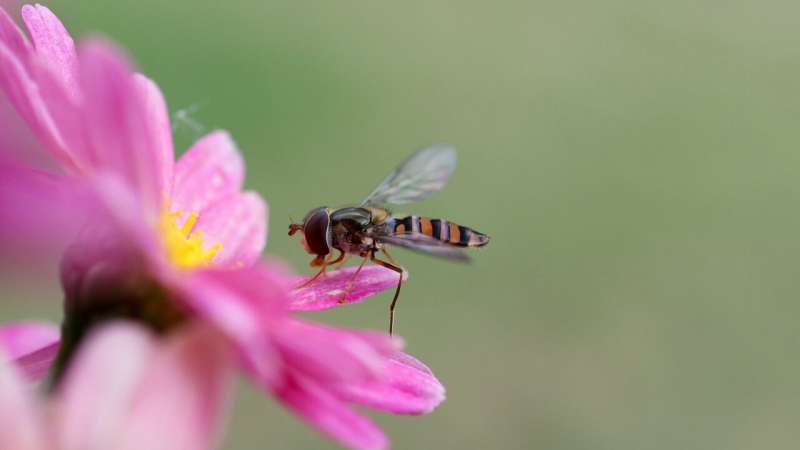In 25 years the number of hoverfly species has fallen sharply in German nature reserves

Besides a sharp decrease in the total biomass of flying insects in German nature reserves, the diversity of species has also declined. Researchers from Radboud University have shown that this applies to hoverflies. Insect populations have declined across the board, especially among more common species. The researchers will publish their results on 12 January in a special edition of PNAS that is devoted entirely to insect declines.
In 2017, Radboud researchers reported a dramatic decline in insects in 63 German nature reserves over 27 years. They were able to draw these conclusions from a large data set on the total biomass of flying insects between 1989 and 2016. "When our research was published, we were almost immediately asked what this decline says about the biodiversity of insects," explains Hans de Kroon, professor of Experimental Plant Ecology. "We can now confirm that the diversity of hoverfly species has also declined in these nature reserves."
Counting hoverflies
Starting in 1989, entomologists trapped insects at various German nature reserves. After 27 years they weighed the total biomass at the research facility in Krefeld. In addition, they counted all hoverflies that were captured in six insect traps in 1989 and 2014. They identified 162 different hoverfly species. "It was an enormous job for the Krefeld entomologists to remove nearly twenty thousand hoverflies from the large insect biomass samples and identify them, but this has provided an extremely valuable dataset," says co-author Eelke Jongejans.
Decline across the board
With this dataset, the researchers can confirm that about 25% fewer hoverfly species were caught in 2014 compared to 1989. "This was compiled for the entire season. However, if you break this down to daily observations—in other words the number of hoverfly species that actually fly around on one day—then the decline in 2014 was about 82%. This provides an important picture of the decreased activity of hoverflies, which play an important role in the ecosystem as pollinators and in controlling aphids," says Jongejans.
"It was also striking that we saw the largest relative decline in common species, and not just the disappearance of rare hoverfly species. So there has been a decline in species across the board. This appears to confirm our hypothesis that a reduction in biomass also leads to less biodiversity," says Jongejans.
Not too late
The research will be published in a special edition of the journal PNAS that is devoted entirely to insect decline. "It provides a good overview of the current state of insects," says De Kroon. "More and more data are confirming our suspicion that insects are doing poorly worldwide."
"Nevertheless, there are some positive developments regarding insect recovery." This year, for example, a large national project was launched. At various locations in the Netherlands, including the Ooijpolder and Groesbeek region near Nijmegen, the possibilities for biodiversity restoration are being studied. De Kroon, project leader for the initiative, explains: "I'm confident that it's not too late and that the insect populations in these areas can still recover."
More information: Insect biomass decline scaled to species diversity: General patterns derived from a hoverfly community, PNAS. DOI: 10.1073/pnas.2002554117
Journal information: Proceedings of the National Academy of Sciences
Provided by Radboud University


















